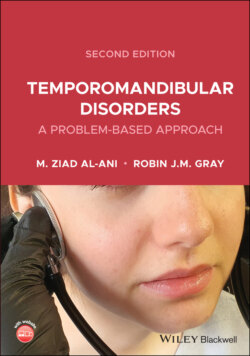Читать книгу Temporomandibular Disorders - Robin J. M. Gray - Страница 64
Maxillary and mandibular midlines
ОглавлениеIf a patient has a straight pathway or transient mandibular deviation during opening, then at maximum opening the upper and lower midlines will coincide (Figure 3.4). In the case of a patient with disc displacement without reduction, the maxillary and mandibular incisal midlines will remain coincident until the point at which the head of the condyle encounters the displaced disc and a lateral shift will then occur. There will then be an obvious discrepancy between the upper and lower centre lines at maximum opening (Figure 3.5).
Figure 3.4 (a, b) Transient mandibular deviation during opening.
(M. Ziad Al‐Ani, Robin J.M. Gray.)
Figure 3.5 Lasting deviation to the left. (a) Mouth closed; centre lines coincident. (b) Mouth open; mandibular deviation to the left.
(M. Ziad Al‐Ani, Robin J.M. Gray.)
When there are adhesions in the joint, either between the disc and fossa or the disc and the head of the condyle, then from the start of opening, the maxillary and mandibular incisal centrelines will not coincide.
